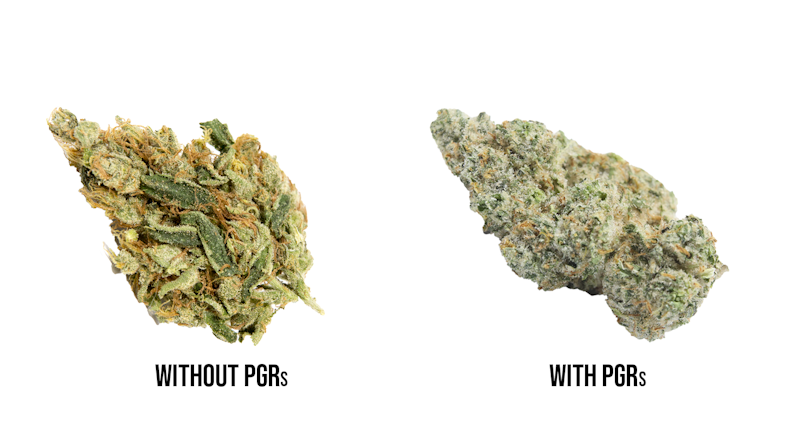
Photo by Tany Stone
What Is PGR Cannabis? Learn to Spot It
Here's how to tell if your cannabis was grown with harmful plant growth regulators (PGRs).
While you might think the cannabis industry wouldn’t grow your precious flower with harmful additives, pesticides, chemicals, etc., that’s unfortunately not the case.
We understand that the last thing you want in your weed is synthetic hormones. So, it may be in your best interest to avoid PGR weed altogether.
For your health and safety, it’s time we discuss PGR weed, what it is, and how to tell if your weed was grown with plant growth regulators (PGR).
What Is PGR Weed? Learn to Spot It

Photo courtesy of International Highlife
As mentioned above, PGR weed is when the plant is grown with plant growth regulators.
PGRs are responsible for controlling plant growth, even down to the nitty-gritty, like when the buds will sprout and how wide the plant and its roots can be.
This is why weed grown with PGRs often results in a weirdly big bud. Because companies using PGRs often make bigger plants, they also ramp up the price too, when in reality, PGR weed doesn’t have significantly stronger effects than regular weed.
In fact, chemicals found in PGR weed can actually decrease the effects of THC and CBD. So, while a big and compact bud looks appealing, it won’t actually produce those strong and desirable effects you’re looking for.
Chemicals Found In PGR Weed

Photo by Brokkelen.nl Netherlands Amsterdam
There are three main chemical PGRs used by companies that produce bigger flowers and buds. Those chemicals and what they’re used for are included below;
- Paclobutrazol: This chemical is solely responsible for plant growth. It attaches directly to plant cells and triggers them to grow and stretch, from the roots, up the stem, into the leaves, and through the buds. But this chemical is known to deplete a cannabis plant of its natural terpenes and THC content. Even worse, when paclobutrazol is smoked, it turns into a carcinogen, nitrosamine, which has been shown to decrease fertility and cause cancer.
- Daminozide: Growers might know this chemical as Alar, which is most commonly used to slow the growth of stems and leaves, which puts pressure on the buds to grow to their maximum size. This chemical also decreases the plant’s natural terpenes and cannabinoids and, when smoked, is also a carcinogen.
- Chlormequat Chloride: This chemical also slows the growth in some areas of the plant, which induces the flowering stage faster than usual. Plants with this chemical often look very neat and evenly distributed, but testing and research say it can cause organ damage and skin/eye irritation when ingested.
How To Tell If A Plant Was Grown With PGRs
Now that we’ve got your attention, here are some ways you can tell if a cannabis plant was grown with PGRs:
- Buds will be incredibly dense, like rock-hard
- Red and brown hairs show up in excess, way more than your usual buds
- The bud might also be damp, wet, or sponge-like
- The abundance of little hairs make up for the lack of crystals (shine your flashlight for a closer look)
- Low THC content
- Chemical taste
- If the bud doesn’t smell when grinded
- After smoking, if you feel extreme lethargy, no motivation, and lingering headaches
Is PGR Weed Harmful? PGR Weed Side Effects
As mentioned above, PGR weed can be very harmful to your health. Although there’s a lack of studies on the subject, it all comes down to common sense.
Keeping the above chemicals in mind, these chemicals can still be present in and on the plant after harvest. That means we’re inhaling those harmful and toxic chemicals when smoking PGR weed.
And, of course, these chemicals can be detrimental to your health. Even short-term exposure can hinder breathing and cause chest pain. Besides that, many PGRs are carcinogens, a.k.a. known cancer-causers.
Potential PGR cannabis side effects, short-term include:
- Headaches
- Nausea
- Skin/eye irritation
- Lethargy
- Decreased fertility
- Organ damage
- Cancer
PGR weed long-term effects can include:
- Impaired ability to clearly think and make decisions
- Increased risk of chronic lung infections
- Increased risk of addiction and mental health challenges
Herb Recommended Products:
READ MORE










